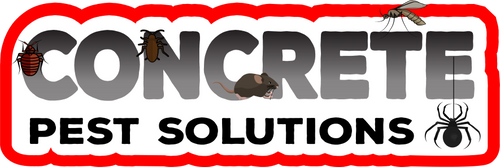WE ARE BED BUG PROS
Bed bugs (Cimex lectularius) are small, elusive pests that have become a significant nuisance worldwide. These insects feed on human blood, primarily at night, and their infestations can lead to psychological distress, allergic reactions, and financial burdens. These pests have experienced a resurgence in recent years due to increased international travel and changes in pest control practices. As these infestations spread, individuals and businesses alike are increasingly turning to commercial heat services to address the problem.
Bed bug infestations are a persistent issue for hotels, apartments, offices, and other commercial properties, where human traffic is high, and pests can easily travel between rooms or properties. Infestations typically result from the transport of bed bugs through luggage, furniture, or clothing. Commercial establishments, particularly hotels and lodging businesses, are especially vulnerable to these infestations due to the constant influx of guests. When left untreated, bed bug problems can lead to significant economic losses, including damage to a company’s reputation, decreased revenue, and possible legal liabilities. Effective pest management, therefore, is critical for businesses to maintain a safe, healthy, and hygienic environment.
Life Cycle
Bed bugs undergo incomplete metamorphosis, consisting of three life stages:
- Egg – Tiny, whitish, and about 1 mm in size, bed bug eggs hatch within 6–10 days.
- Nymph – Immature bed bugs go through five developmental molts, requiring a blood meal before each stage.
- Adult – Fully developed bed bugs can survive several months without feeding, depending on environmental conditions.

Behavior and Habitat
Bed bugs are nocturnal insects, meaning they are most active at night when their hosts are asleep. However, they are opportunistic feeders and may bite during the day if a host is present. Unlike fleas or lice, bed bugs do not live on their hosts; instead, they hide in close proximity to where people sleep or rest.
Common Hiding Places
- Mattress seams and bed frames
- Furniture joints and upholstery
- Cracks in walls, floors, and baseboards
- Electrical outlets and behind wallpaper
- Luggage, clothing, and personal belongings
Bed bugs are resilient pests that can survive extreme temperatures, making them difficult to eliminate. They can go for long periods without feeding, and their small, flat bodies allow them to remain undetected in hidden locations.
Signs of Infestations
-

Crack & Crevice
Bed bugs can hide in walls, especially in cracks, crevices, and electrical outlets. They often retreat into wall voids during the day or when disturbed. This is why heat treatment is effective—it penetrates deep into walls and hidden spaces where bed bugs may be hiding, ensuring comprehensive extermination.
-

Bed Bug Bites
Bed bug bites are one of the first signs of an infestation. They are small, red, itchy welts that typically appear in clusters or lines on exposed skin. These bites are often mistaken for mosquito or flea bites, but they have distinguishing characteristics:
-

Visible Sightings
Visible adult bed bugs, which are small, brownish, and oval-shaped, often hiding in mattress seams, furniture joints, and electrical outlets. Fecal Spots: Dark or black spots on bedding, furniture, and walls, indicating bed bug droppings.
Common Indicators Include:
- Bite Marks: Small, red, itchy welts appearing in clusters or a zigzag pattern, typically on exposed skin.
- Blood Stains: Tiny rust-colored stains on sheets, mattresses, or pillowcases from crushed bed bugs.
- Fecal Spots: Dark or black spots on bedding, furniture, and walls, indicating bed bug droppings.
- Eggs and Shell Casings: Small, pearly white eggs and translucent exoskeletons shed by growing nymphs.
- Live Bed Bugs: Visible adult bed bugs, which are small, brownish, and oval-shaped, often hiding in mattress seams, furniture joints, and electrical outlets.
- Musty Odor: A strong, sweet, musty smell caused by bed bug pheromones, especially in large infestations.

Bed Bug Heat Treatments
Bed bug heat treatment is a process that involves raising the temperature of an infested area to a level that is lethal to bed bugs. Bed bugs cannot survive temperatures above 120°F (49°C) for extended periods, and heat treatments aim to maintain this temperature throughout an entire structure or localized area. This method offers a non-chemical, environmentally friendly
alternative to pesticides and other chemical treatments.

Science Behind Heat Treatments
Heat treatment works by exploiting the thermal tolerance of bed bugs. Studies have shown that bed bugs, including their eggs and nymphs, die within 90 minutes at 118°F (47.8°C) and almost instantly at 122°F (50°C).
These temperatures disrupt the cellular and enzymatic functions of the insects, leading to their demise. The process must ensure even heat distribution to penetrate furniture, mattresses, and cracks where bed bugs hide.
The Bed Bug Heat Treatment Process
1. Inspection and Assessment
- Before initiating heat treatment, our technicians conduct a detailed inspection of the premises to confirm the presence and extent of the infestation. This step involves:
- Identifying bed bug hiding spots, such as mattresses, furniture, and crevices.
- Assessing the severity of the infestation.
- Determining the appropriate heating strategy for the affected area.
2. Proper preparation
Preparation Is essential for the success of heat treatment. Our technician will provide homeowners or property managers with preparation guidelines, which include:
- Removing heat-sensitive items such as candles, electronics, and certain plastics.
- Laundering and sealing bedding, clothing, and curtains to prevent re-infestation.
- Unplugging electrical devices to avoid damage from excessive heat exposure.
- Arranging furniture to allow even heat distribution.
3. Setting Up Heating Equipment
- After preparation, the extermination team sets up industrial-grade heating equipment, which typically includes:
Electric or propane heaters: These devices generate and distribute hot air to raise the room’s temperature. - High-powered fans: Used to circulate the heat evenly throughout the space.
- Temperature sensors and monitors: Placed in various locations to ensure the correct temperature is reached and maintained.
4. Heating Phase
- Once the equipment is in place, the extermination team gradually increases the room’s temperature to between 120°F and 140°F. This process typically takes several hours and follows a controlled approach:
- Slow temperature increase prevents structural damage to items in the room.
- Continuous monitoring ensures that all areas receive adequate heat. Adjustments are made as needed to eliminate cold spots where bed bugs could survive.
5. Holding and Monitoring
- The extermination team maintains the high temperature for a prolonged period (typically 4-6 hours) to ensure that all bed bugs, including eggs, are eradicated.
- Digital sensors and thermal imaging devices help monitor heat distribution and detect any areas that need additional treatment.
6. Cooling and Post-Treatment
- Inspection after the designated heating period, the temperature is gradually reduced to a normal level.
- A post-treatment inspection is conducted to verify that all bed bugs have been eliminated.
- If necessary, follow-up treatments, such as targeted pesticide applications, may be used in particularly stubborn infestations.
Key Benefits of Bed Bug Heat Treatments
- Highly Effective – Heat treatment kills all life stages of bed bugs, including eggs, nymphs, and adults, ensuring complete eradication in a single treatment.
- Non-Toxic & Chemical-Free – Unlike pesticides, heat treatment does not involve harmful chemicals, making it a safer option for humans, pets, and the environment.
- Kills Pesticide-Resistant Bed Bugs – Bed bugs have developed resistance to some chemical treatments, but they cannot survive extreme heat, making this method highly reliable.
- Reaches Hidden Areas – Heat penetrates deep into mattresses, furniture, cracks, and walls where bed bugs hide, ensuring thorough extermination.
- Quick Results – Unlike chemical treatments that require multiple visits and take weeks, heat treatment eliminates bed bugs in a single day, allowing immediate re-entry into the treated space.
- No Residue or Odor – Heat treatment leaves no chemical residue or lingering odors, making it a clean and convenient solution.
- Minimal Disruption – Since bed bugs are eradicated in a single session, heat treatment minimizes downtime for homes, hotels, and businesses.
- Prevents Spread of Infestation – Unlike chemical sprays that may cause bed bugs to scatter, heat kills them on-site, reducing the risk of reinfestation.
- Safe for Most Belongings – Heat treatment allows homeowners to keep most of their furniture and personal belongings, reducing the need for costly replacements.
- Environmentally Friendly – With no chemical pollutants or toxic waste, heat treatment is a green alternative for bed bug control.

PEACE OF MIND
You can sleep in peace knowing our "Rock Solid Services" are 100% effective. Our services are backed by own 60 day warranty. If you see any new activity call us and we will retreat without any cost to you.
CALL US 216-250-3972
Please ensure all fields are filled out to help us provide a quick response and a well-tailored service. Missing information may delay our ability to assist you effectively. Thank you!











